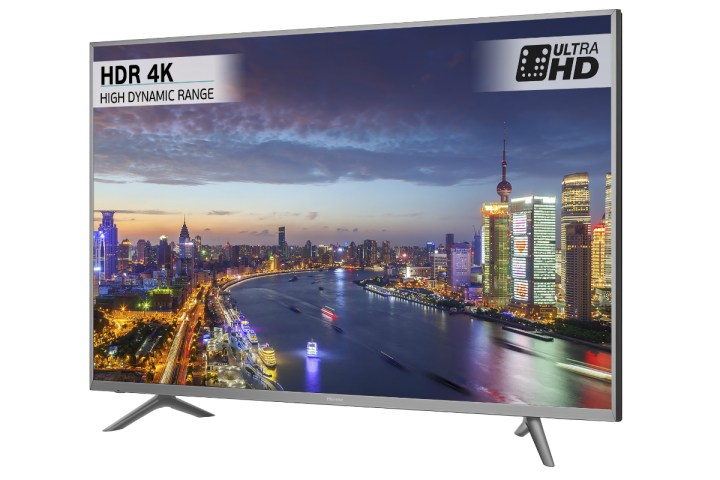
It’s not like a massive vacuum between 40-inch and 50-inch screen existed. Hisense itself sells 43-inch screens and 48-inch screens, but there is definitely less choice than if you’re in the market for a 50-inch or larger television. The model in question is the 45N5750, and it has plenty of the must-have TV features around at the moment, including 4K UHD resolution and HDR10 support, plus compatibility with Hybrid Log Gamma (or HLG), the new live-broadcast high-dynamic range system.
Onboard Wi-Fi and an Ethernet connection make it possible to view live-streaming services, and the Hisense TV has Netflix, Amazon Prime, YouTube, and BBC iPlayer installed, along with a web browser. It also uses Anyview Cast and Stream for content sent from a PC or smartphone, which helps if you don’t have a Chromecast or similar device plugged in. A quad-core processor keeps everything running, and should provide enough power to ensure it does so smoothly.
The 45-inch TV has been announced for the U.K. at the moment, and can be purchased through retailers such as Richer Sounds, where it’s priced at 540 British pounds, or about $700. We’ve contacted Hisense to see if there are plans to release the 45N5750 in the U.S., and will update when we hear back. Hisense is a small player in the U.S. at the moment, with a selection of models available from stores including Walmart and Best Buy. However, the brand is gaining international attention through a series of massive sponsorship campaigns, from the 2018 FIFA World Cup to the Red Bull Formula One team.



